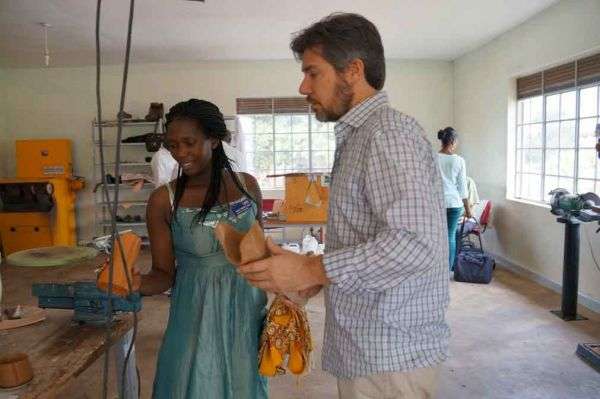Printed prosthetics are here, and complex bioprinting is coming, orthopedic technologist says

Once confined to the realm of science fiction, 3D printers have become part of the mainstream. These machines fabricate physical objects by melting and layering plastic through a nozzle. Users can create or download professionally designed plans and produce custom objects ranging from tree ornaments to prosthetic limbs.
No one understands the process better than U of T's Matt Ratto. This associate professor at the iSchool and director of the Semaphore Research Cluster researches the intersection of digital technologies and the physical world.
U of T News talked to Ratto about how 3D printing will evolve, especially when combined with other contemporary technologies.
3D printers have evolved from large, expensive machines to smaller, cheaper units for home use. Where do you think the technology is heading?
I think 3D printing is moving away from general-purpose hardware and software towards more specific functions and uses. Such a move allows a better fit between user, use context and the design of the 3D tools and technologies. For instance, we are now seeing bioprinters that make use of the same general printer technology as plastic-based hobbyist printers. But they add heated environmental areas for the printing material (cells) and purified compressed air drivers that maintain a sterile printing area, functions specific to the printing of complex biological forms. There are even inexpensive versions of these printers, such as the Biobot, which is a 3D printer for living cells.
Which industries will be most affected as 3D printers become more pervasive?
Medical industries and specifically patient care are really set to be disrupted by 3D printing. Bioprinting of complex cellular assemblies is probably the furthest out, but this will really change how patients are treated. Closer to the market are custom medicines – pills that contain the specific active ingredients for an individual, rather than mass-produced units made for a general profile. And the 3D printing of custom braces, prosthetics and orthotics is right around the corner. We have a research project and non-profit spin-off called Nia Technologies that is already doing this in developing countries. Productive disruption in this space will occur through socio-technical innovations that bridge humanities, scientific and engineering knowledge.
The Internet of Things is touted as the next big thing. What will be its impact on Canadians?
IoT has been on the agenda for some time. Like "big data," it will likely have its biggest impact once it has sunk in to business practice. We already have a number of examples of successful IoT innovations. ZipCar is probably the most obvious example. The best way to think about this is to look at specific industries and see how new forms of data analytics can help or hinder social life.
Can you foresee a combination of 3D printing and the IoT ?
We can now 3D-print objects that contain simple electronic circuits. As part of our research we've been working on the production of prosthetic braces and sockets that contain intrinsic pressure sensing circuits. The prosthetic device will then stream real-time information about the fit and comfort of the device directly to a mobile device, giving the patient or caregiver granular data over time about how the device is working. The ability to 3D-print "smart objects" is a really fascinating area of novel research.
Is Canada in a position to take advantage of either technology and become a world leader?
Toronto is really well placed. We have great educational resources with the variety of universities, including U of T, Ryerson and OCAD University. There is a terrific digital-media small-and-medium-sized enterprise infrastructure with great skills and abilities. Of course, Toronto is a crossroads of the world, and innovation benefits greatly from the intellectual churn that attends diversity.
I do think we need to go our own way, to avoid the worst excesses of Silicon Valley, and to create innovation processes and environments that focus on real-world problems and not just economic gain and "convenience culture." There is a kind of hubris in the innovation discourse that says "$5 billion of investment/profit in five years" or it doesn't matter. I think such a focus distracts us from what we really should be doing, which is getting people together to ideate, to think creatively, and to engage with both social and technical systems in ways that provide real benefits.
Is there one use for 3D printing that will revolutionize the world?
A lot of claims have been made about what will be the "killer app" of 3D printing, from just-in-time production of Tupperware lids to the printing of food. The first idea misses the energy costs of 3D printing. It's a terrible replacement for mass producing forms that can easily and cheaply made through injection molding. The second idea seems to imply that most people like processed foods. 3D printing a food basically means grinding up the base form into a slurry and then printing it into a new shape or arrangement. We actually have a lot of foods like this in the marketplace. The Pringle is probably the best example. I think that the revolutionary qualities of 3D printing have to do with the ability to produce novel things: smart objects, unique biological forms, hybrid materials and topologies that could not be made before.
Provided by University of Toronto



















